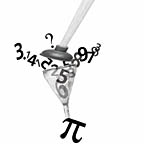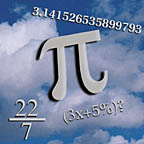
Today's generation of technical people have a serious crutch that is a potential problem we older folks don't think about-the calculator. As an engineer, I, of all people, know the value of the digital calculator we have today. But along with the advancement, we have created a crutch for the new generations that debilitates other thought processes. We need to develop a training program that will empower our "replacement units" with better problem-solving skills. The following diatribe should help us older, more experienced folks to train our new prospects in a more efficient manner and with less frustration, i.e., in a "positive reinforcement" mode rather than a "take it or leave it" mode. No one benefits from experienced professionals being frustrated enough with the younger generation to give up training and simply do the work themselves, eventually leading to burnout.
One might ask why our digital-thinking generation might have problems adjusting in our occupation? In my experience in training young engineers, they don't have the learned skill of thinking in relative terms. This lack of skill is a significant problem in doing preliminary designs for facilities. When a 10% level conceptual design is put down on paper, the engineer has to quickly perform preliminary equipment sizing to determine approximate space, power and structural support requirements. Since the information that is typically used to do detailed calculations to size this equipment is not available, they are stuck before ever getting started! If you ask today's generation to give you the square root of 56, they would immediately pick up their calculator and give you the answer to several decimal places. But is that useful info? You simply wanted to know "about" how much it is? And since 56 is between 49 and 64, the squares of seven and eight, we older folks would guesstimate that it's around 7 1/4 or so (it's actually closer to 7 1/2). Just ask one of the younger professionals for the value of Pi, and he immediately picks up the calculator and spouts out the answer to several significant digits. For the slide-rule generation, it's 22/7ths, or a little over 3. Whether you're doing flow ratios, or pressure ratios, or other square/square root relationships, that approximation is close enough for conceptual design level.
We baby boomers have raised a generation or two that thinks that the right answer is the single number that pops up on a calculator or in a spreadsheet after solving an equation. We older folks know that the single digital answer is simply relative. An ancient mentor once told me 25 years ago that just because the new digital thermometers can display in tenths of a degree, it doesn't necessarily mean that they are more "accurate" than the antique mercury version! What is "missing" is the analog thinking that can mentally put 2 + 2 together, which we had to use before the days of the Wang or the digital calculator. What we need is a way to teach approximation methodology that has become antiquated by the calculator.

Slide-Rule Thinking
Today's generations think that life is simply answering the correct questions to multiple choice exams, when in reality, life is answering essay questions (I can't believe I'm actually saying this!) in blue-book fashion. I personally prefer an "analog chronometer" to a digital watch because I want to "see" the time relative to the hours and quarter-hours. It is inconceivable to me that it is a significant accomplishment in today's world for a child to learn how to read a clock and "think" his way to determining what time it is, rather than being spoon-fed the answer in a digital display. We are all painfully aware of the cash register syndrome-it is impossible for most cashiers to give correct change if the cash register doesn't tell them how much it is.Being an engineer, I prefer to identify the older generation's analog/relative thinking as "slide-rule thinking." In other words, one can see the answer relative to its accuracy, get a gut feeling for the sensitivity of variation, and be forced to think through to the answer while carrying the scientific notation in one's head.
This may also be why the new generation of technical folks is having difficulty relating to real-world problems. As techy types, we are enthralled and elated to be able to answer people's technical questions. But many times, our answer, though it's absolutely accurate and correct, has no relevance to the inquirer's real question. They sometimes walk off wishing they had never asked the question. The epitome of this is the new world of tech support personnel. The following joke well illustrates this syndrome:
A helicopter is flying towards the Seattle airport when all of a sudden a heavy fog rolls in, and the pilot loses visual control. The pilot climbs to an altitude above the fog and sees a skyscraper poking up through the soup. He flies toward the building and circles around. Seeing someone staring out a window of the building, a passenger holds up a large sign that says, "WHERE ARE WE?" After another circle around the building, the helpful onlooker in the building is holding up a sign answering, "YOU'RE IN A HELICOPTER!" With that, the pilot whips around, heads straight to the airport, drops down through the fog and makes a perfect landing. When the passengers asked how he was able to find the airport, he responded, "The guy in the building gave us an absolutely correct answer, but totally useless information. I knew it had to be a Microsoft employee and knew where the airport was relative to their office building."-Source Unknown
Okay. As problem-solving engineers, we have successfully defined the problem (the first step in problem solving.) Now we have to solve this problem. We older folks are responsible morally and professionally to train the new kids on the block.

Filling the Toolbox
When showing a new engineer how to design a system or solve a particular problem, we often find they are exasperated they are exasperated because they didn't already know how to do it. (Some of this is just part of the humility development necessary for new grads who think that the degree they worked so hard for will enable them to solve all the world's problems right away.) Two of the biggest complaints I have heard from new grads are:
- Why don't they teach us how to do this in college?
- Why don't we ever use those textbooks that we could have sold back to the student bookstore instead of keeping?
The answer to both is an analogy I've developed: The purpose of the educational system is to load your toolbox with the tools necessary to function in your career. It is not until you get into the workforce that you are trained how to use those tools-i.e., on the job training.
We have to develop a program to supplement the missing tools in the toolbox. Slide-rule thinking is just one of the missing tools that the spoon-fed "Sesame Street" generation needs to have developed in its training.
Kids graduating today are just like we baby-boomer-'60s-kids were a few decades ago-we didn't just think we knew it all, we knew we knew it all! We have to deal with the techno-smugness most engineers have, thinking it was a Herculean achievement just to get that engineering degree. Now they are entering into the business world, ready to take their "light saber" and solve all of the world's problems in one slash, only to find that what has only been accomplished thus far is loading the tools in their toolbox. They learn that the toughest part is still ahead of them-being trained to use those tools to solve problems in the real world.
To take the toolbox analogy a little farther, maybe the following scenario will help illustrate this concept. We are all shown how to use, for example, the screwdriver in college on a simple, small, straight-head new screw. After graduation, the first screw (design problem) we tackle either has a head full of old dried paint that has to be chipped out or is mauled so badly that is looks more like a nail head than a screw head. The look on our faces says then, "What do I do now?" Our challenge is to train the new grads to use the other tools to either repair the slot in the screw or to make a new one so the screw can be turned.
My concern is that the "work-around" thinking used to solve problems in ways not straightforwardly shown in school requires thinking beyond the digital answer produced on the calculator from the solved equation. The best work-around thinkers I have met are in third-world countries-they are forced to solve most of their problems using the work-around method due to the lack of necessary tools.

Finding Out There Aren't Any Solutions
Slide-rule thinking and work-around thinking are examples of how to solve the real world's problems, which do not have simplistic solutions. There is a book recently published called "Poetic Knowledge." The book addresses the fact that the world really functions on what engineers today call "fuzzy logic." The education system has been leaning more towards simplistic education to solve simplistic problems-it's easier than taking the time to develop and grade essay tests with blue-book answers. But it doesn't prepare the student for reality. In fact, the computer itself has made it preferable to educate the new generations with multiple choice questions and answers. The problem is that when the new grads get a job in the real world, they are shocked to find that there are usually NO CHOICES from which to answer their multiple-choice question (the design problem) and that one has to do the necessary research and effort (serious intellectual sweat) just to develop some choices. This effort entails getting their hands dirty (so to speak), and for many of them, this is not what they thought "professional white-collar" work entailed-not what they pictured as part of their future vocation/occupation.
What has to be developed is training that teaches how to develop the potential solutions to the problems to be solved. After all, not only do they have to find the variables in the equation, they have to develop the equation with which to start the whole problem solving process!
The Plan
Here's a plan for training the "digital" generation:
- Start with a task that you know will allow the trainees to paint themselves into a corner. The surer they are of themselves, the faster they will reach that corner.
- Don't assign the task and then leave town for a few days; be ready in the wings to appear when they turn around and ask for help.
- DO NOT have a smug "I told you so" look on your face.
- Feed them a little bit of info at a time. Too much info can lock up their receptor capabilities due to input overload.
- Don't give them the answer-that's too easy for both of you, and neither learns much from this approach.
- The feed rate, if too slow, can bore them. The feed rate of information for task progression has to be relative to the ability of the receptor to digest the information and give feedback. (The model of a typical feedback control loop comes to mind. Vary the input based on output.)
- Do not expect them to work at the same pace at which you solve problems. Take your time/effort estimate and multiply it by four, or even up to 10, depending on the trainee and the task.
- Don't uphold the techno-uppity attitude that just because your listener/receiver hasn't yet learned the "secret code language," they are stupid (BIG difference between stupidity and ignorance).
- As you are transmitting information, incorporate images and parables that relate to their specific educational background. This is one of the best ways to lock in the concepts they are learning.
- Take the specific task solution and relate it back to the theory that was taught in college. This might require a little homework on your part to determine, for example, where the 500 comes from in the water-to-heat-transfer equation (Btuh = gpm x delta T x 500). It's a good refresher for you anyway. It is important to take them from where they were in school to the shorthand methods we have developed in the industry.
- Impress upon them the importance of the fundamentals. When they do a system with glycol in the future, they will hopefully remember that the magic 500 is no longer valid and needs to be modified, and they'll know how to modify it.
- Teach methods of how to approximate solutions with minimal information available, i.e., how to bridge the gap without all of the variables identified or quantified. Most people are pleased to wear the label, but there are many negatives attached to perfectionism.
After teaching the approximation methodology, teach the full detailed solution that is, of course, required for final detailed design. This is the opportunity to show how all of the variables fit into the final solution, and it's also an opportunity to illustrate variable sensitivity, i.e., show how the assumption variations affect the final result.